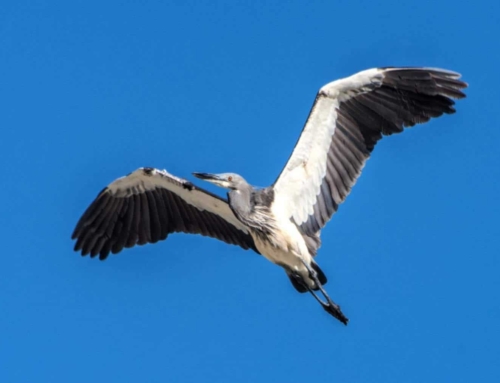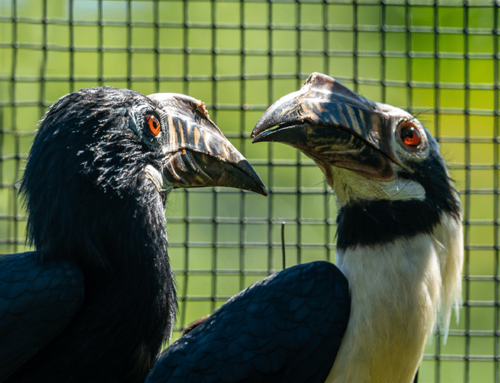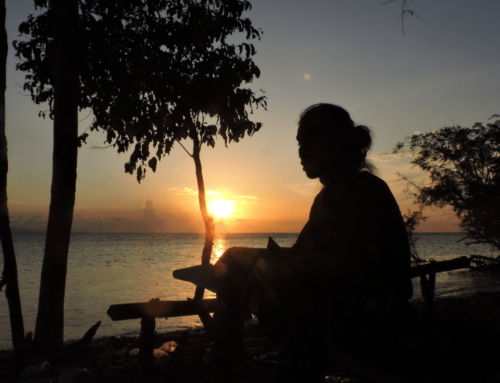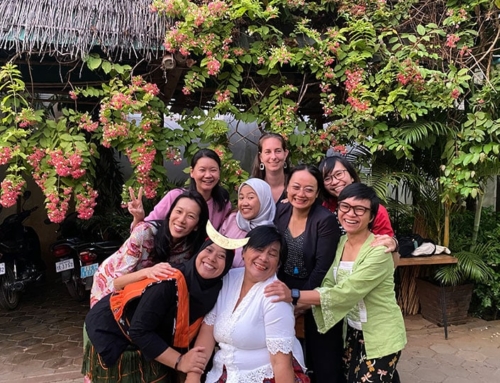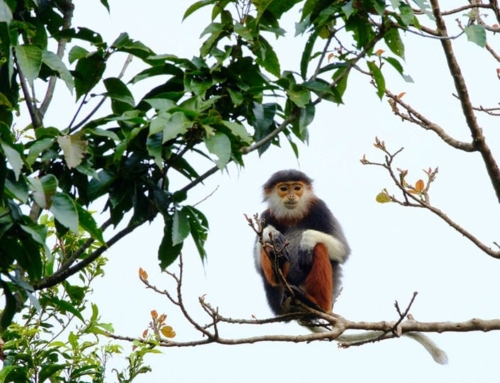SatuCita Foundation is one of the newest partners in Synchronicity Earth’s Asian Species Programme with a particular focus on one Critically Endangered species: the painted terrapin. Anna Heath writes about the mission of a young Sumatran conservationist to save a remarkable freshwater turtle from extinction.
“Someone must do something to help this species.” These were the words of Joko Guntoro, a young Sumatran conservationist, when he left his job at a well-established, orangutan conservation organisation to set up a new initiative for an obscure freshwater turtle in his home province of Aceh in northern Sumatra.
One of the world’s rarest freshwater turtles
The painted terrapin is a river turtle found in just four countries in Southeast Asia. It is known for the remarkable transformation which males of the species undergo every year during their breeding season. When the time comes to mate, the males of the species are utterly transformed, from a nondescript brown to an extraordinarily colourful turtle, with a distinctly patterned shell and a white head with a bright red stripe between their eyes.
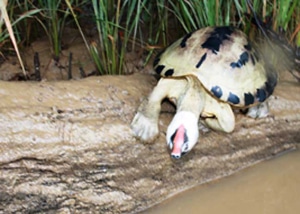
When coming into breeding season, male painted terrapins adopt more colourful patterns. Image: SatuCita Foundation
However, it was not the bizarre beauty of these turtles that attracted Joko to this work, but the fact that they are one of the 25 most threatened species of freshwater turtle in the world, and are classed as Critically Endangered on the IUCN Red List of Threatened Species. This classification means that the painted terrapin has the dubious distinction of belonging to the list of Critically Endangered land and freshwater species found in Southeast Asia (known as ‘ASAP Species’ as the list is compiled by the Asian Species Action Partnership, or ASAP). There are a staggering 265 species that fit the criteria for this list, a key source of information underpinning Synchronicity Earth’s support for species-focused conservation in Southeast Asia.
As any good scientist would, Joko began his journey to protect this species by carrying out a survey. This found that populations of the painted terrapin had dropped drastically from historic levels, due to intensive poaching in the 1990s. While poaching is no longer a common practice, local people continue to collect terrapin eggs during the highly predictable nesting season. While the terrapins lay their eggs on coastal beaches, they spend the rest of their lives in mangrove forests and estuaries rather than in the sea. This means that the widespread destruction of mangrove forests for charcoal production and oil palm plantations in this region has also had a major impact on this species. In this beautiful excerpt, Joko describes the experience of monitoring the nesting habits of this species.
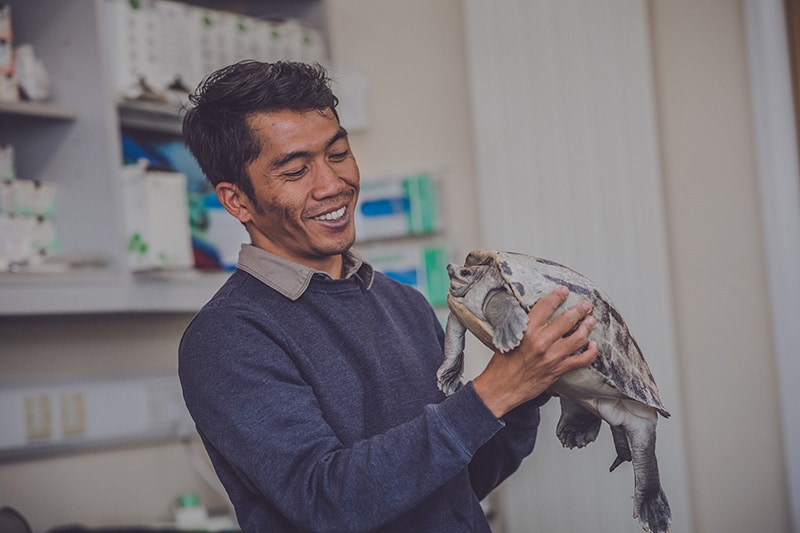
Joko Guntoro, a young Sumatran conservationist, left his job at a well-established, orangutan conservation organisation to set up a new initiative for the painted terrapin. Image © Chester Zoo
A night-time vigil
“The night is late; actually, it is early morning. My watch shows 1:37 a.m. The sky is dark, and only a few stars are out. There are no fishing activities in the estuary and out at sea. From the beach, you can just see some light on the fishing boats at anchor. Not much activity on the boats either. Maybe they are waiting for the high swell out on the sea to subside.
“A moment later, a large object with the shape of an upturned boat can be seen emerging from the waves that ripple on the shoreline. It moves slowly up the beach: a female turtle. Her forward motion is very slow, with occasional stops, as though she is very circumspect of her surroundings. The turtle continues, step by heavy step, to move towards higher ground on the sandy beach until, finally, she reaches the area where plant growth begins. It took her about eight minutes to arrive here from the beach.
Then, a repeating scraping sound is heard from beach sand being excavated. Some time later, sounds of falling objects hitting sand: ‘tung……. tong’. ‘Tung’ is the sound of an egg being pressed out of the cloaca, ‘tong’ follows when the egg lands in the sand pit. Local people call the Painted Terrapin ‘Tuntong laut’.
“A clutch usually comprises twelve to eighteen eggs. After all the eggs are eventually laid, the turtle refills her nest pit with sand by shovelling heap after heap back in until it is flush with the surrounding sand once more. Silence returns for a moment, then the Tuntong moves back down to the water, enters the waves where they break, starts swimming, and is quickly lost to sight. By the time of dawn, around 04.00 a.m., all other Tuntong laut have disappeared, too.”
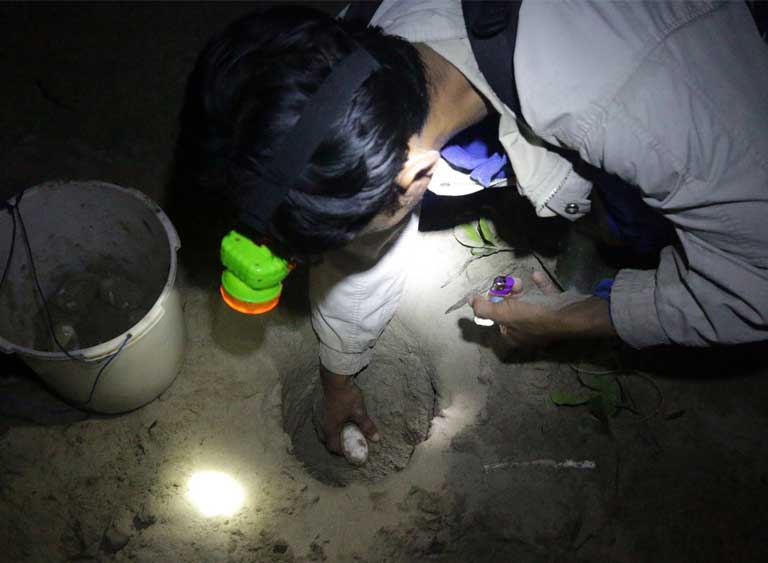
Excavating the nest to transfer terrapin eggs to the protected hatchery which will improve the chances of survival. Image: SatuCita Foundation
Giving the painted terrapin a head start
Based on this work, Joko founded his organisation, SatuCita Foundation, in 2012 to protect this species and boost its population in the wild, working with local communities to raise awareness and interest in the terrapin as well as develop new forms of income.
A key element of this work is SatuCita’s nest patrolling and head-starting programme. Joko and his team took this well-known practice, often used to protect marine turtles, and transplanted it to freshwater beaches in northern Sumatra.
To protect turtle eggs from poachers and predators, the team patrols beaches (usually walking four or five kilometres every night) and brings turtle eggs into their head-starting facility. Here, the eggs are reburied and incubated until they hatch, and are raised in a pool for two to four months before being released back into the wild.
As of last year, SatuCita had released 3,700 hatchlings as part of this programme, and the team’s 2021 nest patrol saw 579 eggs from 33 nests safely brought into their hatchery.
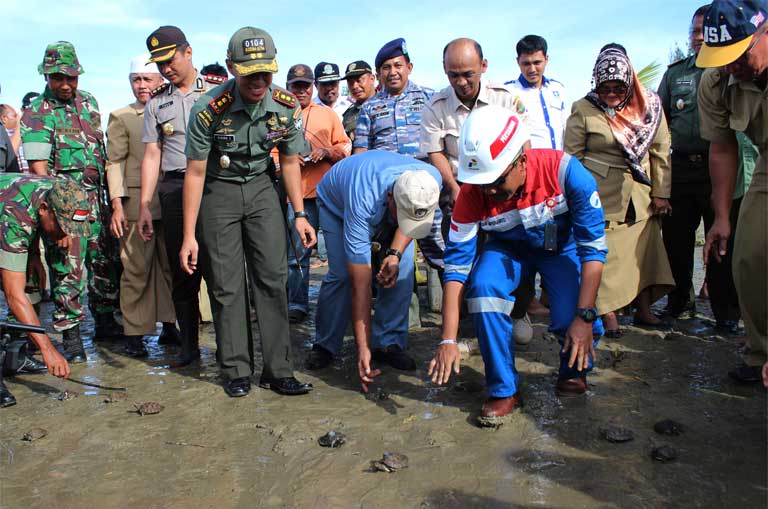
Indonesian officials join in the joyous occasion of releasing head-started young painted terrapins back into the wild. Image: SatuCita Foundation
Joko and his team have partnered with international conservation organisations to improve and develop this process and their work. For example, in 2018 Joko travelled to the UK for training with Chester Zoo on health screening for the painted terrapin and to learn more about approaches to conserving freshwater turtles in the wild.
To protect a species, you must protect its habitat
To complement and reinforce this regular work to recover the wild population of the painted terrapin, SatuCita is carrying out research on this species in the wild to better understand its ecology and the threats it faces. In the future, the team also hopes to develop a captive breeding programme for this species.
Alongside the threat from loss of eggs, the painted terrapin is also impacted by degradation and destruction of mangrove forests in northern Sumatra, driven by agricultural development. SatuCita has taken on this challenge, and is working with local communities in Aceh to reforest mangrove habitats. The team’s motto here is, ‘Good forest is good for people and wildlife’. So far, SatuCita and its community partners have replanted over four hectares of degraded mangrove forest.
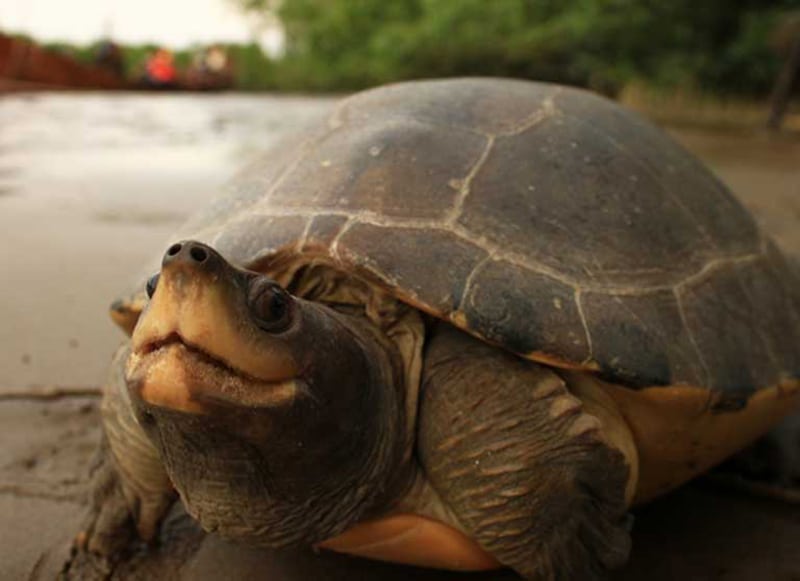
Thanks to the SatuCita Foundation, this obscure, Critically Endangered terrapin has a chance at survival. Image: SatuCita Foundation
SatuCita may be a small conservation organisation, but the drive of its team and its value for this species is immense. Synchronicity Earth is excited to have been able to bring this organisation on board this year, and is providing core support which covers the hard-to-fund costs like salaries and equipment. We are supporting this community-based organisation to develop, grow and do more of what they do best. Venture down to one of northern Sumatra’s beaches in the dead of night and you may just be lucky enough to hear ‘tung…. tong’, the sound that brings hope for this extraordinary species.

